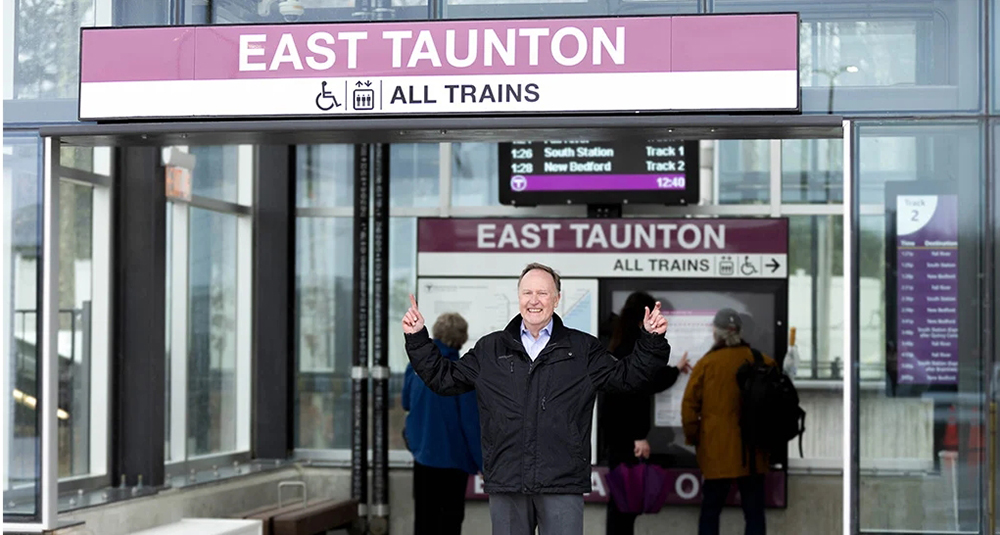News:
Spotlight Content
Posted: October 17, 2013
Stop & Shop is an industry leader in green building
Leadership in Energy and Environmental Design (LEED) certification program than any other national chain, demonstrating their real commitment to reducing their impact on the environment. Located at 400 Boston Post Rd., the new 45,000 s/f store is seeking LEED Silver certification, and is anticipated to use up to 20% less energy than a typical grocery store of this size. It will boast the latest in energy efficient features, some debuting for the first time for the supermarket company. Stop & Shop will introduce complementary electric car charging stations at the new store, providing parking spots for electric cars. More than 600 roof-top solar panels which are expected to supply about 11% of the store's overall energy needs; and LED parking lot lights which will reduce energy consumption by 50% vs. traditional lighting and will save about 1.4% of the store's annual electricity requirements.
Stop & Shop is a member of the U.S. Green Building Council and EPA's Smart Way program and has been awarded LEED (EB) certifications for 50 of its existing stores. Vanasse Hangen Brustlin, Inc. (VHB) has served as Shop & Shop's green building and sustainability consultant since 2006.
Green building features include:
* White roof to reflect the sun light and reduce the heat gains in the store, requiring less energy for space cooling.
* Skylights to harvest day light and dim energy-efficient fluorescent lights to reduce the electricity consumption during peak daylight hours by an average of 2.5%.
* LED lighting in overhead track lights, spotlights on specialty areas & displays, exterior store signs and in the frozen food cases which uses half the wattage of traditional incandescent lighting.
* Low air return in frozen aisles which makes the store environment more comfortable for shoppers.
* ECM (electronically commutated motor) motors in the refrigerated fixtures and walk-in coolers that deliver uniform airflow while using 33% less electricity.
* Low mercury, energy-efficient, fluorescent light fixtures throughout the store with occupancy sensors in the storage areas and offices.
* An Energy Management System to monitor the performance of the lighting, refrigeration, and HVAC systems.
* Low flow fixtures in the bathrooms and prep areas to reduce water consumption by over 35%.
* Low VOC (volatile organic compounds) paints, adhesives and sealants to ensure proper air quality.
* Green cleaning methods used with non-toxic materials for better indoor air quality.
* Drought resistant landscaping to minimize water consumption.
Tags:
Spotlight Content
MORE FROM Spotlight Content
Check out the New England Real Estate Journal's 2025 Fall Preview Spotlight
NEREJ’s Fall Preview is Out Now!
Explore our Fall Preview Spotlight, featuring exclusive Q&As with leading commercial real estate professionals and in-depth byline articles on today’s most relevant market topics. Gain insight into the trends, challenges, and opportunities shaping New England’s commercial real estate landscape this fall.
Explore our Fall Preview Spotlight, featuring exclusive Q&As with leading commercial real estate professionals and in-depth byline articles on today’s most relevant market topics. Gain insight into the trends, challenges, and opportunities shaping New England’s commercial real estate landscape this fall.

Quick Hits
Columns and Thought Leadership

How do we manage our businesses in a climate of uncertainty? - by David O'Sullivan
These are uncertain times for the home building industry. We have the threat of tariffs mixed with high interest rates and lenders nervous about the market. Every professional, whether builder, broker, or architect, asks themselves, how do we manage our business in today’s climate? We all strive not just to succeed, but

Shallow-bay wins on 495/128: A renewal-driven market with a thin pipeline - by Nate Nickerson
The Boston industrial market entered mid-2025 in a bifurcated state. Large-block vacancy remains elevated, while shallow-bay along the 495/128 corridor continues to prove resilient. Fieldstone’s focus on this geography positions us squarely in the middle of a renewal-driven, supply-constrained

How long should I hold a property for it to qualify as an investment property in connection with a 1031 tax-deferred exchange? - by Brendan Greene and Mark McCue
Internal Revenue Code (IRC) Section 1031 provides “No gain or loss shall be recognized on the exchange of property held for productive use in a trade or business or for investment if such property is exchanged solely for property of like kind which is to be held

30 years on South Coast Rail: A journey to connect Southeastern Mass. with commuter rail - by Rick Carey
On March 24, 2025, a dream more than three decades in the making became a reality with the launch of the Massachusetts Bay Transportation Authority’s (MBTA) South Coast Rail commuter service. This milestone marks the completion of a project that overcame numerous starts and stops, including changes in leadership










.png)